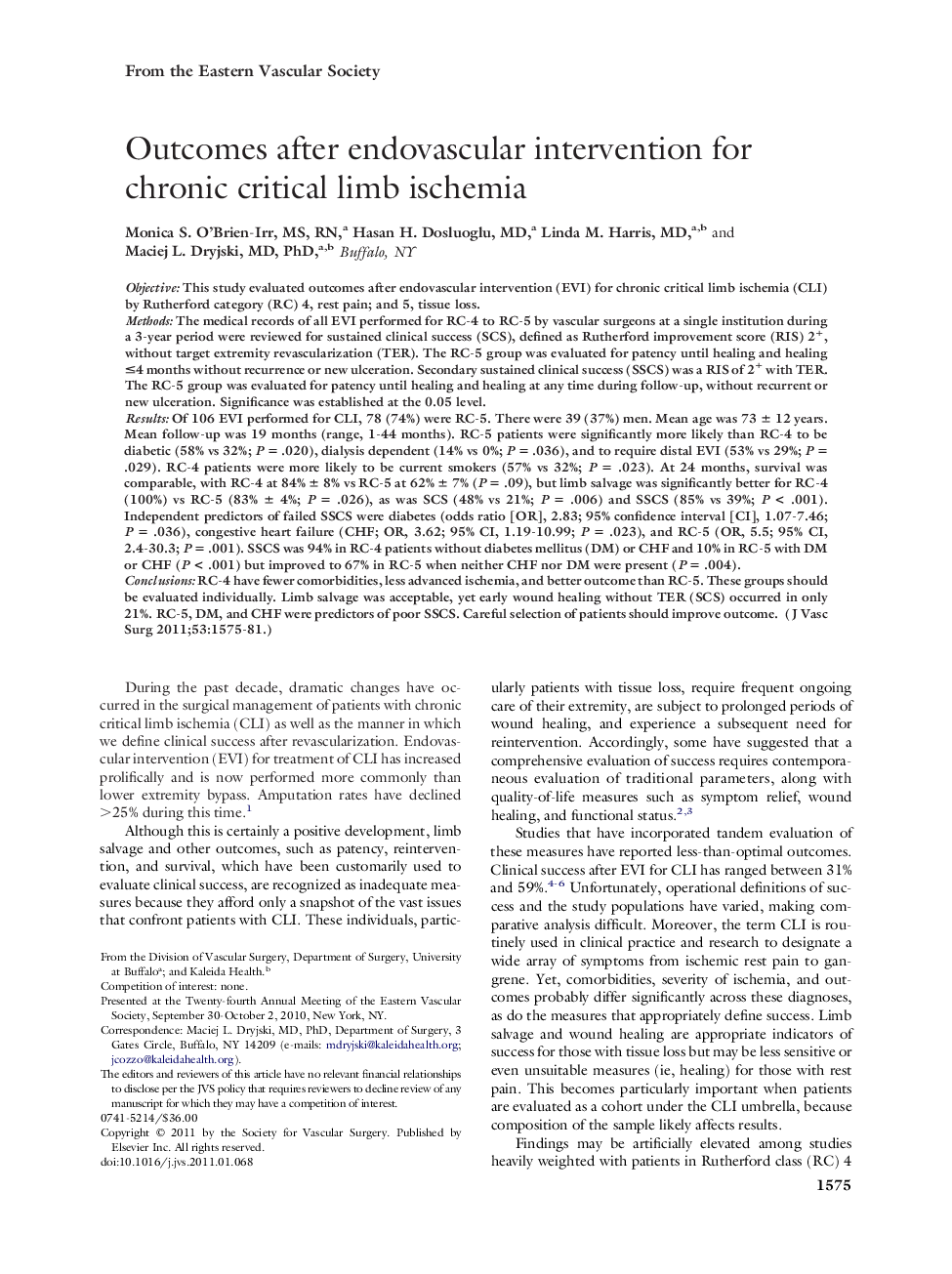| کد مقاله | کد نشریه | سال انتشار | مقاله انگلیسی | نسخه تمام متن |
|---|---|---|---|---|
| 2992658 | 1179884 | 2011 | 7 صفحه PDF | دانلود رایگان |

ObjectiveThis study evaluated outcomes after endovascular intervention (EVI) for chronic critical limb ischemia (CLI) by Rutherford category (RC) 4, rest pain; and 5, tissue loss.MethodsThe medical records of all EVI performed for RC-4 to RC-5 by vascular surgeons at a single institution during a 3-year period were reviewed for sustained clinical success (SCS), defined as Rutherford improvement score (RIS) 2+, without target extremity revascularization (TER). The RC-5 group was evaluated for patency until healing and healing ≤4 months without recurrence or new ulceration. Secondary sustained clinical success (SSCS) was a RIS of 2+ with TER. The RC-5 group was evaluated for patency until healing and healing at any time during follow-up, without recurrent or new ulceration. Significance was established at the 0.05 level.ResultsOf 106 EVI performed for CLI, 78 (74%) were RC-5. There were 39 (37%) men. Mean age was 73 ± 12 years. Mean follow-up was 19 months (range, 1-44 months). RC-5 patients were significantly more likely than RC-4 to be diabetic (58% vs 32%; P = .020), dialysis dependent (14% vs 0%; P = .036), and to require distal EVI (53% vs 29%; P = .029). RC-4 patients were more likely to be current smokers (57% vs 32%; P = .023). At 24 months, survival was comparable, with RC-4 at 84% ± 8% vs RC-5 at 62% ± 7% (P = .09), but limb salvage was significantly better for RC-4 (100%) vs RC-5 (83% ± 4%; P = .026), as was SCS (48% vs 21%; P = .006) and SSCS (85% vs 39%; P < .001). Independent predictors of failed SSCS were diabetes (odds ratio [OR], 2.83; 95% confidence interval [CI], 1.07-7.46; P = .036), congestive heart failure (CHF; OR, 3.62; 95% CI, 1.19-10.99; P = .023), and RC-5 (OR, 5.5; 95% CI, 2.4-30.3; P = .001). SSCS was 94% in RC-4 patients without diabetes mellitus (DM) or CHF and 10% in RC-5 with DM or CHF (P < .001) but improved to 67% in RC-5 when neither CHF nor DM were present (P = .004).ConclusionsRC-4 have fewer comorbidities, less advanced ischemia, and better outcome than RC-5. These groups should be evaluated individually. Limb salvage was acceptable, yet early wound healing without TER (SCS) occurred in only 21%. RC-5, DM, and CHF were predictors of poor SSCS. Careful selection of patients should improve outcome.
Journal: Journal of Vascular Surgery - Volume 53, Issue 6, June 2011, Pages 1575–1581